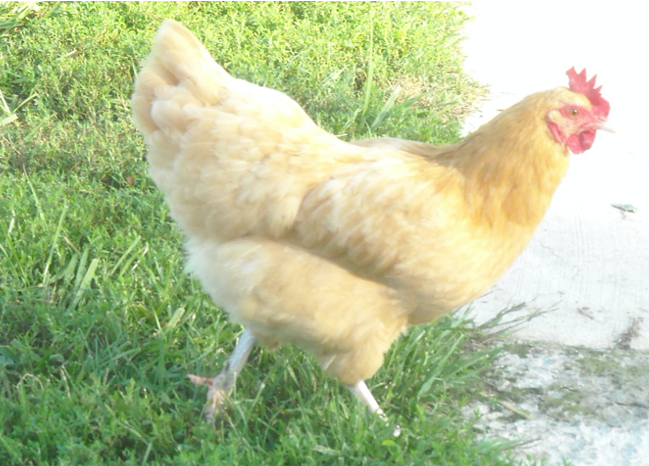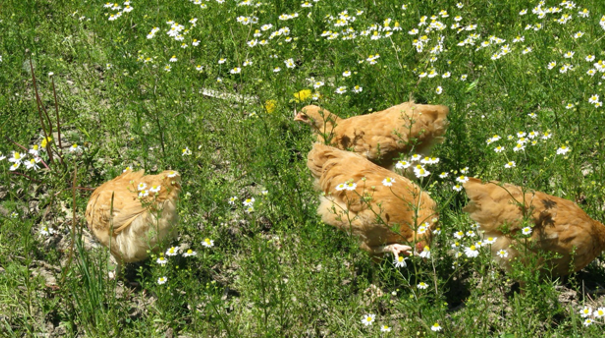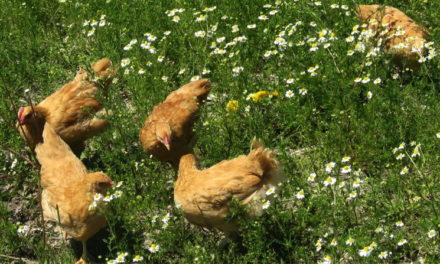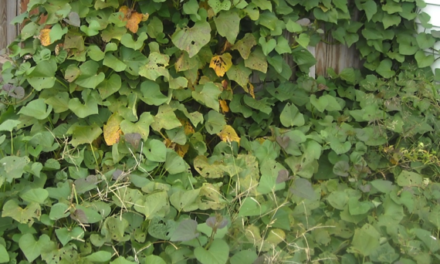Some of the best breeds of chickens are not necessarily the highest egg producers. Let’s look at three more breeds that lay brown eggs.
Buff Orpingtons
Everyone should have a “Buff” or two in their flocks. Orpingtons are the quintessential homestead chicken. They are great bird for beginners and are popular worldwide. They come in many colors.
Pros
They have a friendly, docile nature that makes them great family birds. The Buff Orpington is a steady egg producer of between 200-280 eggs annually, but the rare-colored birds like a Lavender or Jubilee Orpington are more for show and lay around 150 eggs per year. They go broody and make reliable mothers. They are an excellent table bird, plump and white-skinned, and make for a hardy, great choice.
Cons
The downside with a bird that is docile and great with children is that more aggressive birds often bully them. They also can become stressed after days of intense heat. The only bird I have ever lost to heat has been Buffs.
Watching a Buff run toward you is something every flocker will enjoy!

New Hampshires
New Hampshire chickens developed in 1915 from a strain of Rhode Island Reds brought to New Hampshire. They were recognized as a distinct breed in 1935.
Pros
They are an excellent choice for the 4H novice to breed to exhibition levels as the single color (chestnut red) is easier to achieve. They have a calm nature and make good barnyard pets. This dual-purpose bird has an easy-going nature that makes it compatible with other breeds in the flock. They lay from 200-280 eggs per year.
Cons
Certain strains can be somewhat cranky and they are not as hardy as some of the hybrids. I like this kind, but I am working on the most self-sufficient breeds and the New Hampshires are not as good a forager for my needs. This is a great bird for confinement.

Rhode Island Reds
This breed originated as a result of crossing the Red Malay Game and other Asiatic stock together with the Leghorn. This genetic build-up is often used in the creation of commercial hybrids. The single comb Rhode Island Reds can lay more eggs than any other pure breed hen and is a favorite breed for both urban and rural homesteads.
Pros
They reliably lay 200-280 eggs annually. They are incredibly hardy and are good winter layers. They usually do not go broody.
Cons
The large comb and wattle of the classic Rhode Island Reds can be an issue in winter. They are not as friendly as many of the breeds we’ve discussed. Some strains can be aggressive. If they do go broody, it is sometimes difficult to get them to “break brood.” Rhode Island Reds are a good dual-purpose bird that is happy to adapt to almost any healthy surrounding.

The choices you make when you are standing in front of Buchheit’s excellent brooding system will affect the success and happiness of your flock. I hope these in-depth looks at breeds helps you make an intelligent decision for your future flock. Be blessed!
Anne May






